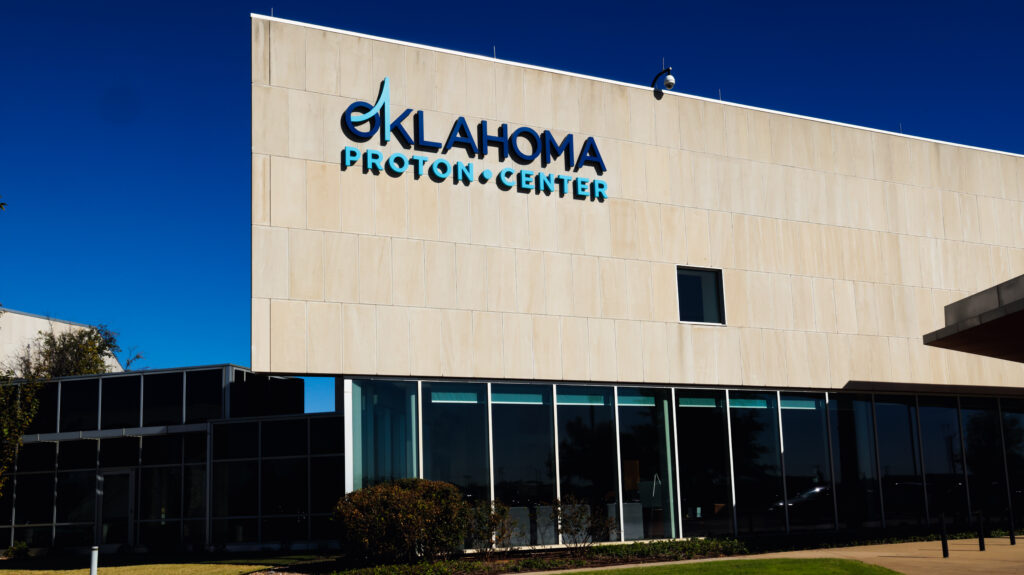
New NRG Oncology trial shows promising survival benefit, now advancing to Phase III
A new national study led by NRG Oncology is bringing renewed hope to patients diagnosed with glioblastoma (GBM)— one of the most aggressive and difficult brain cancers to treat. The findings, recently published by Bioengineer.org and presented at the ASTRO Annual Meeting in San Francisco, showed that patients who received proton therapy at an intensified radiation dose of 75 Gy experienced improved overall survival compared to those treated with traditional photon (X-ray) radiation.
The results were strong enough for the trial to move forward into a Phase III clinical study, the next step toward confirming proton therapy’s role as a new cornerstone in GBM management.
Understanding the Study
The trial, known as NRG-BN001, was designed to test whether delivering a higher radiation dose could safely improve survival outcomes for GBM patients when combined with standard chemotherapy (temozolomide).
Two types of radiation were compared:
- Photon-based radiation (IMRT/X-rays)
- Proton beam therapy, which delivers radiation with pinpoint precision
While earlier phases of the trial found that escalating the photon dose to 75 Gy did not improve survival, researchers wanted to determine if proton therapy could safely deliver the same intensified dose — and possibly make a difference in outcomes.
The Results
In a groundbreaking development that’s capturing the attention of the oncology community, new findings from the NRG-BN001 clinical trial have revealed promising results for patients treated with proton therapy.
This Phase II randomized trial, originally designed to evaluate dose escalation with photon therapy, took an exciting turn when researchers examined the proton therapy cohort. Patients who received proton therapy at the intensified dose of 75 Gy experienced a meaningful improvement in overall survival (OS), a result that not only met but exceeded the trial’s predefined threshold for success.
The significance of these findings cannot be overstated. They mark the first clear evidence that proton therapy, when used for dose-intensified treatment, may extend survival for newly diagnosed GBM patients. Because of this milestone, the study is now advancing to a Phase III trial to more definitively determine the therapeutic advantage of proton dose escalation.
Key Findings
- In the proton therapy cohort (193 evaluable patients), the hazard ratio (HR) for death was 0.81 in favor of proton therapy, with a 70% confidence interval of 0.67-0.98, and a p-value of 0.11 — significant in this trial’s design (Type I error threshold of 0.15).
- At 2 years, the absolute survival benefit in the proton arm vs. control was 6.8% (49.9% vs. 43.1%). At 3 years, the advantage was 4.6% (30.0% vs. 25.4%).
- The study found reduced rates of high‐grade lymphopenia (immune system suppression) in the proton arm (17.1%) vs. a photon tech cohort (23.4%) and lower rates of severe neurologic toxicity (1.8% vs. 5%).
- Subgroup analyses suggested patients with favorable biomarkers (e.g., MGMT promoter methylation) and lower risk classifications (RPA class) derived superior benefit, though no significant interaction effect was found (i.e., benefit extended across groups).
Why Proton Therapy Matters for Brain Cancer
Glioblastoma is an especially difficult cancer to treat. It grows quickly, infiltrates surrounding brain tissue, and is often located near critical areas that control movement, speech, and memory.
Traditional radiation therapy delivers X-rays that pass through both healthy and cancerous tissue, increasing the risk of long-term side effects like fatigue, cognitive decline, and neurological damage.
Proton therapy, on the other hand, uses charged particles that stop precisely at the tumor, minimizing damage to healthy brain tissue and lowering the risk of complications. This allows doctors to safely deliver higher doses of radiation directly to the tumor, potentially improving survival without increasing side effects.
Proton Therapy in Oklahoma
Oklahoma Proton Center is proud to offer the same advanced proton therapy technology used in this national study. Our team has treated patients from across the region with brain tumors, head and neck cancers, and other complex diagnoses, giving them access to world-class treatment close to home.
If you or someone you love has been diagnosed with cancer, our physicians can help you explore whether proton therapy is the right option for you.

Learn More
To learn more about proton therapy to or schedule a consultation, visit okcproton.com or call (405) 773-6700 today.
Mehta MP, Pugh SL, Mahajan A, Shih HA, Tsien CI, Chenevert TL, et al. Signal-Seeking Phase II Randomized Trial of Proton or IMRT Dose Intensification in GBM: NRG BN001. Presented at the ASTRO Annual Meeting, San Francisco, CA, 2025.
